Tableau photography constructs familiar narratives that refer to paintings, cinema, literature, and people from the past. In this way, it shows how contemporary life parallels other times in history and in art. Photographers vary widely in how they create those narratives.
The Photograph as Contemporary Art by Charlotte Cotton exposed me to many different types of art photography. Her chapter on tableau photography resonated with me the most. I found this type of art photography to be very authentic in how it depicts human thoughts and feelings. When I look at the images by tableau photographers, they connect me to my subconscious fears and hopes in a way that other types of photography do not.
In this article, I go over a few of the defining aspects of tableau photography and highlight some of the photographers that it well.
Cinematic Reference Points
Jeff Wall
Jeff Wall’s images resemble familiar scenes in nonspecific movies. Because of this, the viewer feels almost immediately connected with the image. He uses our culture’s love of cinema to construct coherent narratives that most people understand.
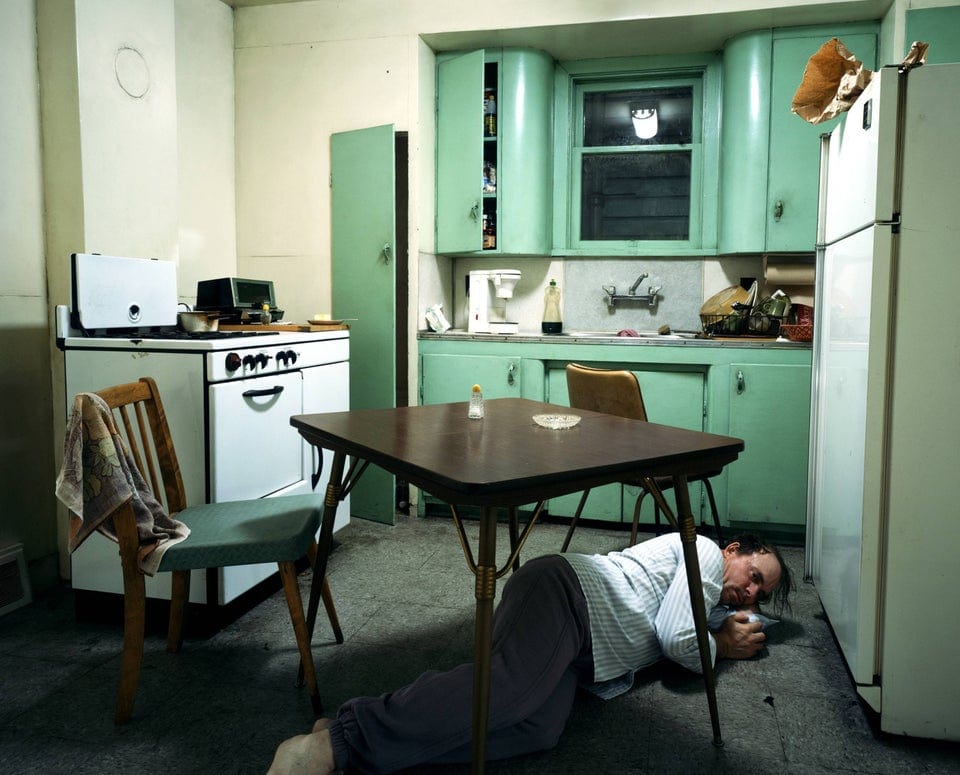
Jeff Wall, Insomnia, 1994.
In this photograph, Insomnia, the expression on the man’s face, his position under the table, and the messiness of the kitchen create an allegory of psychological distress. The stylization of the photo makes it evident that it was intentionally choreographed. To create an image such as this one, he needed to hire a team of people to make it including an actor. As a result, his photography questions the popular idea of the lone photographer. Like a film director, it adds orchestrator of cast and crew to the role of photographer.
Philip-Lorca diCorcia
Philip-Lorca diCorcia took portraits of men who were often sex workers that he had asked to pose for him around Santa Monica Boulevard in Hollywood and other places around the United States. His image titles typically included the name, age, location, and the amount paid to pose for him.
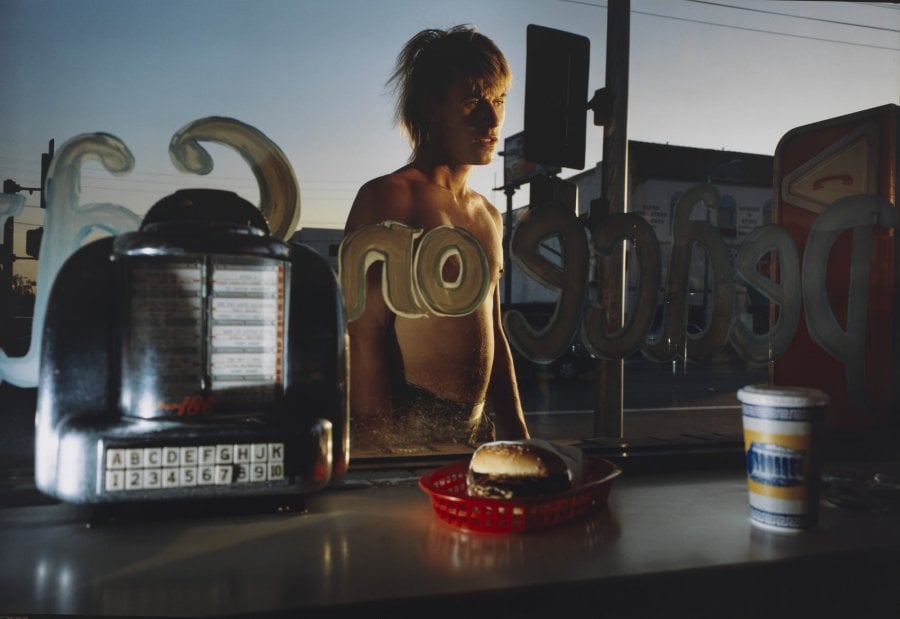
Philip-Lorca diCorcia – Eddie Anderson; 21 years old; Houston, Texas; $20
diCorcia’s photo titles cause the viewer to wonder about the story and aspiration of the individual. Juxtaposing images of their bodies with titles that indicate the amount paid to pose for the photo is a clear reference to the sex industry. Perhaps, he is reminding the viewer that people’s bodies can be bought. Especially these people’s bodies. It could also be a statement about the price of pursuing fame.
His photos are often called cinematic. This is due to his use of dramatic lighting. But tableau photography is not a still version of cinema. Although, it does use cinema, novels, art, etc. as reference points to help the viewer accept it as a merging of fact and fiction
Ambiguous and Unreferenced Narratives
One of the great uses of tableau photography as a format is that it can carry intense but ambiguous drama that’s shaped by the viewer’s own train of thought. It can cause anxiety or uncertainty about the meaning of an image.
Sarah Dobai
Sarah Dobai uses tableau photography for ambiguous and unreferenced narratives. Her photos do not reference a time and place thus creating a dreamlike quality to them. The psychological drama is apparent in her photographs but intentionally left open-ended. This photo was taken in Dobai’s living space. This indirectly allows parts of Sarah’s life to become a part of the piece.
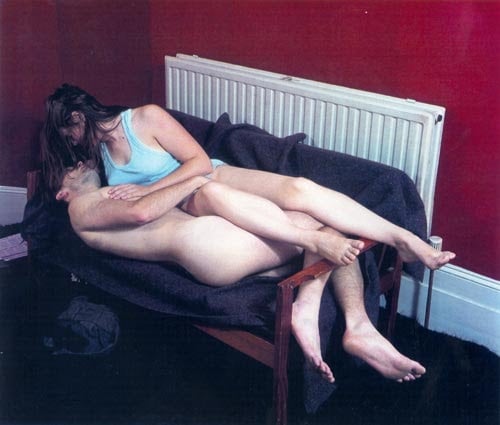
Sarah Dobai, Red Room, 2001
Hannah Starkey
Hannah Starkey uses tableau photography to depict figures with faces turned away from us, leaving the character unexplained. Thus, the characters do not reveal their thoughts and feelings. This leaves it to our imagination to make potential explanations. The staging around the characters doesn’t reveal to us their identities, instead, it gives us clues to who they might be.
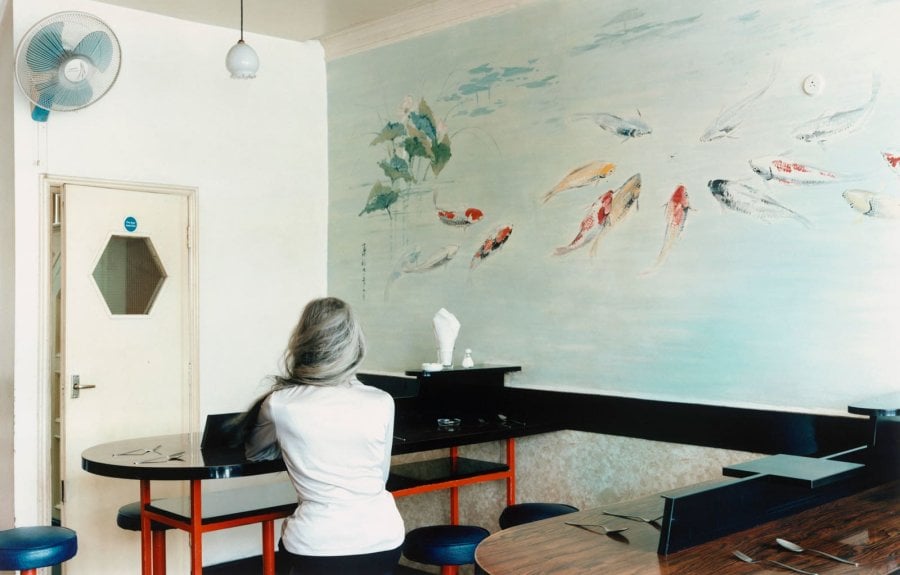
Hannah Starkey – Untitled, March 2002
Literary References
Gregory Crewdson
For example, tableau photography references literature in Gregory Crewdson‘s photograph, Untitled (Ophelia), 2001. This photo references Ophelia from Hamlet and places her in a modern and suburban setting.
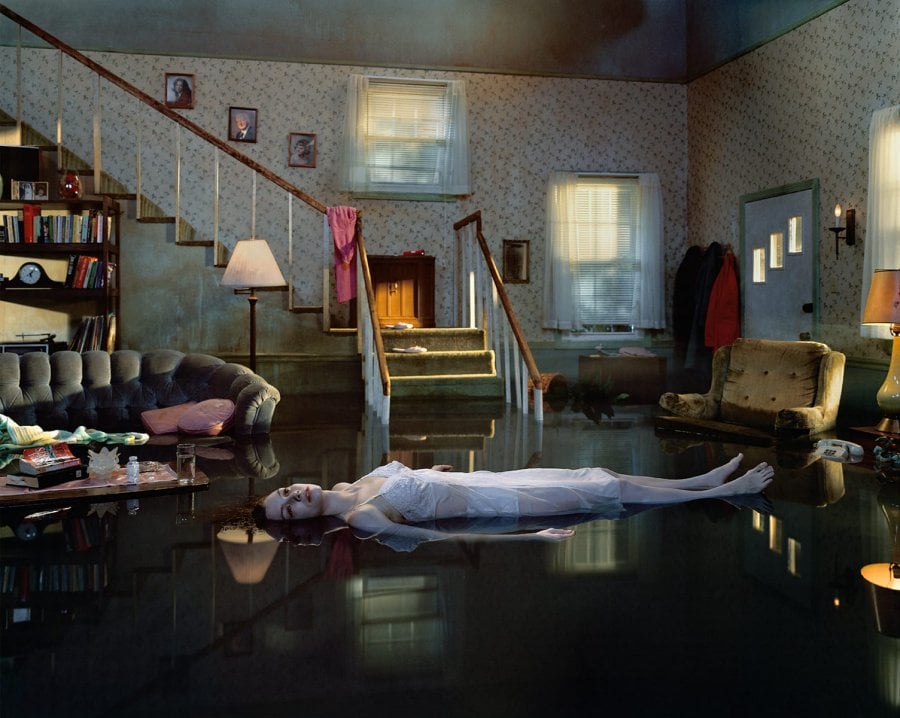
Gregory Crewdson – Untitled (Ophelia), 2001
Tableau photography also challenges the meaning of the role of the creator. For example, in Gregory’s case, when creating an image, he is the director, much like a movie director. He does this by directing how the image will be created with the entire crew of people. He never actually takes the image himself. One time, in an interview, he said that he doesn’t do anything hands-on, he doesn’t even like clicking the shutter.
Historical Events
Thomas Demand
Tableau photography can also tell a story by referencing a famous historical event. Photographer Thomas Demand starts with a photograph of an architectural place that either he or someone else took. He then carefully reconstructs a simplified model of the place in the photo using styrofoam, paper, and cardboard. Afterward, when his model is complete, he creates a series of photographs of the model. This image, Tunnel, 1999, is of the interior of a model of the tunnel where Princess Diana had her tragic car accident.
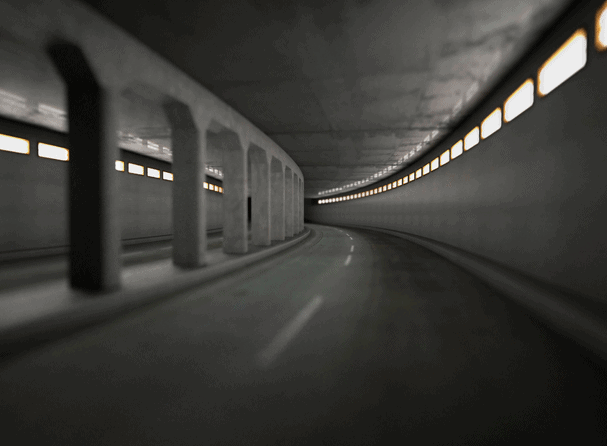
Thomas Demand – Tunnel, 1999
Conclusion
These tableau photographers inspire me, not necessarily to be a better photographer, but to be a better storyteller. I feel like the most powerful images we experience, are the ones that tell universal narratives we all identify with. This is possible in many types of photography but the uniqueness of tableau photography is it references to literature, cinéma, and historical events to construct those familiar narratives. These highly orchestrated photos become meta images of our cultures.